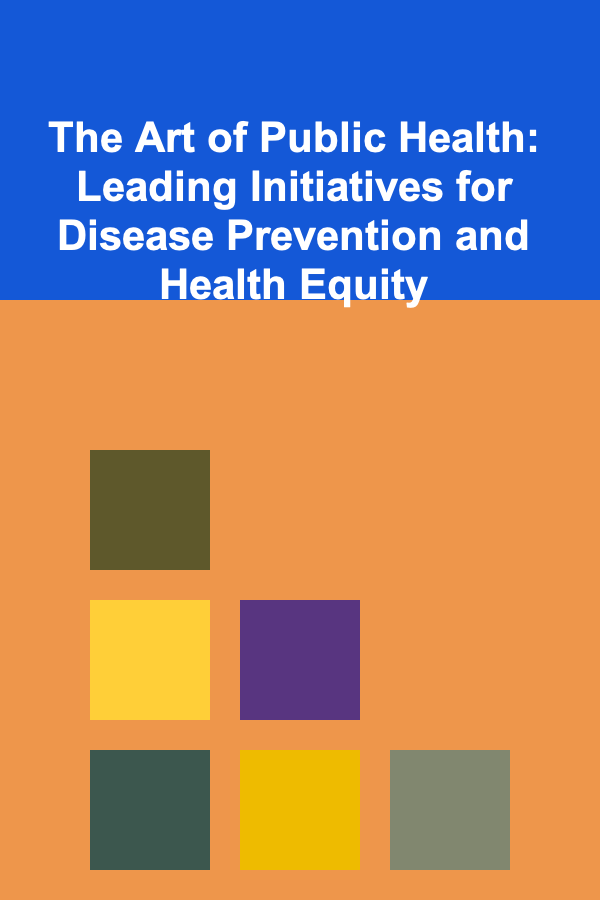
How to Teach Kids Color Theory with Printable Coloring Pages
ebook include PDF & Audio bundle (Micro Guide)
$12.99$5.99
Limited Time Offer! Order within the next:

Color theory is an essential concept in art that helps individuals understand how colors work together and interact. For children, learning color theory can be both fun and educational, laying a foundation for their creativity and artistic expression. While many adults may think color theory is a topic reserved for older students or professional artists, it can be effectively taught to children through engaging activities like coloring pages.
In this article, we will explore how to teach kids color theory using printable coloring pages. We'll discuss the key elements of color theory, why coloring pages are an effective teaching tool, and provide practical tips and ideas for incorporating color theory lessons into your child's artistic practice.
Understanding the Basics of Color Theory
Color theory is built on the principles of color relationships and how colors interact with each other. There are several fundamental concepts that children can grasp when introduced to color theory at an early age:
1. The Color Wheel
The color wheel is the most basic visual representation of colors arranged in a circular format. It helps kids understand how colors are related to one another. The primary colors (red, blue, yellow) are placed at equal distances, and secondary colors (green, orange, purple) are created by mixing primary colors. Tertiary colors (like red-orange or yellow-green) are made by mixing primary and secondary colors.
2. Primary, Secondary, and Tertiary Colors
Understanding primary, secondary, and tertiary colors is the foundation of color theory.
- Primary Colors: These are the colors that cannot be made by mixing other colors---red, blue, and yellow.
- Secondary Colors: These are made by mixing two primary colors. For example, mixing blue and yellow creates green, red and yellow create orange, and red and blue create purple.
- Tertiary Colors: These are created by mixing a primary color with a secondary color. Examples include yellow-orange, red-orange, blue-green, etc.
3. Warm and Cool Colors
Colors can also be classified as warm or cool. Warm colors are those that evoke warmth and energy, such as red, orange, and yellow. Cool colors, such as blue, green, and purple, tend to evoke calmness and tranquility. Teaching kids the difference between warm and cool colors helps them understand how to use colors to convey moods or feelings in their artwork.
4. Complementary Colors
Complementary colors are pairs of colors that are opposite each other on the color wheel. For example, red and green, blue and orange, yellow and purple. When placed next to each other, complementary colors create contrast and make each color appear more vibrant. Understanding complementary colors helps kids create striking, balanced artworks.
5. Analogous Colors
Analogous colors are colors that sit next to each other on the color wheel. For example, blue, blue-green, and green form an analogous color scheme. Analogous colors work well together because they share common hues, creating a harmonious and visually appealing effect.
6. Color Value and Saturation
Color value refers to how light or dark a color is, while saturation refers to how vivid or muted a color appears. These concepts may be a little advanced for younger children but can still be introduced through simple examples like making a color darker by adding black or lighter by adding white.
7. Color Harmony
Color harmony is the concept of combining colors in a way that is aesthetically pleasing. Kids can explore harmony by experimenting with different color combinations and learning which combinations work well together and which ones may clash.
Why Printable Coloring Pages Work for Teaching Color Theory
Coloring pages are an excellent way to teach children about color theory for several reasons:
1. Hands-On Learning
Coloring is a tactile, hands-on activity that allows children to actively engage with colors. By physically coloring in a picture, kids are not just passively absorbing information---they are applying it directly, which helps them better understand color relationships.
2. Visualizing Color Combinations
When children color an image, they can experiment with different color combinations, helping them understand how colors interact with each other in real-time. This practical application helps reinforce the theory behind color relationships and color harmony.
3. Encourages Creativity
Coloring pages give children the freedom to explore their creative expression while learning about color theory. Kids can experiment with various color schemes, such as complementary, analogous, or even monochromatic schemes, in a playful and low-pressure environment.
4. Structure with Flexibility
Printable coloring pages offer structure in that the outlines are already provided, but they also allow flexibility in how children use color. This balance between structure and freedom encourages kids to think critically about color choices while still expressing themselves artistically.
5. Easy to Customize
You can create or find printable coloring pages that are tailored to specific color theory lessons. For example, you can print pages featuring simple objects like flowers or geometric shapes, which will help kids learn how to apply color relationships in a variety of contexts.
How to Teach Color Theory Using Printable Coloring Pages
Teaching kids color theory through printable coloring pages can be broken down into several key activities. These activities can be tailored to different age groups or skill levels, making the lesson engaging and appropriate for children of varying abilities.
1. Introduce the Color Wheel
Start by introducing the color wheel to your child. You can print out a simple color wheel and go over the primary, secondary, and tertiary colors with them. Explain how colors are related, and point out how mixing two colors creates a new color. To make this concept interactive, you can have your child color in a blank color wheel, using the correct primary and secondary colors.
2. Exploring Primary and Secondary Colors
Once your child has a basic understanding of the color wheel, use printable coloring pages that focus on primary and secondary colors. For example, you could print out images of flowers, animals, or geometric shapes and ask your child to color them using only primary colors. This will help them understand how the primary colors can be combined to create secondary colors.
You can also provide images that require mixing primary colors to create secondary colors, such as asking your child to color a picture of a rainbow using the correct sequence of primary and secondary colors.
3. Experiment with Warm and Cool Colors
Create printable coloring pages that include scenes with natural elements, such as the sun, sky, water, and trees. These can be ideal for teaching warm and cool colors. For example, you can explain that the sun and fire are warm (red, orange, yellow), while water, the sky, and shadows are cool (blue, green, purple).
Encourage your child to color the scene using only warm or cool colors. You can then switch it up, asking them to create a picture that uses only the opposite set of colors.
4. Introducing Complementary Colors
Once your child is comfortable with primary and secondary colors, you can move on to complementary colors. Use printable coloring pages with contrasting shapes or objects. For instance, print out a picture of a green tree and a red house, and encourage your child to use complementary colors to color them. Point out how the red and green make each other appear brighter when placed side by side.
To reinforce this concept, you can provide pages that have one dominant color and ask your child to use the complementary color for accents or details, helping them understand how these colors interact visually.
5. Analogous Colors
Analogous colors are those next to each other on the color wheel, and they create a harmonious, soothing effect when used together. Choose printable coloring pages with natural subjects like sunsets, gardens, or underwater scenes, where analogous colors are often used in nature. Ask your child to choose three colors that are next to each other on the color wheel and color the picture using those hues.
You can also print out images of rainbow gradients, where kids can experiment with blending analogous colors to create smooth transitions between hues.
6. Creating Color Harmonies
Once your child has a basic understanding of complementary and analogous colors, you can introduce the concept of color harmony. Provide them with coloring pages featuring a mix of shapes or designs, and encourage them to use various color schemes. You can challenge them to create a harmonious color palette or experiment with contrasting color schemes for dramatic effects.
Encourage your child to experiment with different color combinations---such as primary, secondary, and tertiary colors, or even monochromatic colors (using shades of a single color)---and discuss how each combination creates a different mood or feel for the artwork.
7. Play with Color Saturation and Value
Introduce the concepts of color saturation and value by providing coloring pages that feature objects with varying levels of brightness. You can challenge your child to color an object in both its lightest and darkest forms by mixing colors with white and black. This helps children understand how value can affect the mood and impact of a color.
To teach saturation, ask them to experiment with more vibrant or muted colors by adjusting the intensity of the colors they use.
Conclusion
Teaching kids color theory using printable coloring pages is a fun, hands-on way to introduce them to the basics of color relationships and artistic expression. By exploring concepts like primary and secondary colors, warm and cool colors, complementary and analogous colors, and color harmony, children can develop a deeper understanding of how colors interact and how to use them effectively in their artwork.
Coloring pages provide the perfect medium for experimenting with color theory, allowing children to apply what they've learned while unleashing their creativity. Through playful, interactive lessons, kids not only gain an appreciation for color but also begin to develop critical thinking and problem-solving skills that will serve them well in future artistic endeavors. Whether you're a teacher, parent, or caregiver, incorporating color theory into your child's coloring activities is an enjoyable and educational way to foster their love for art and creativity.
Reading More From Our Other Websites
- [Home Budget Decorating 101] How to Plan Your Decor Purchases for Maximum Savings
- [Tie-Dyeing Tip 101] The Science Behind Reverse Tie-Dye: Color Removal and Restoration
- [Home Family Activity 101] Best Home Family Activities That Inspire Growth and Personal Development
- [Home Pet Care 101] How to Care for Your Pet's Ears and Eyes
- [Home Holiday Decoration 101] How to Set the Perfect Holiday Mood with Lights and Soft Furnishings
- [Personal Care Tips 101] How to Use Blush to Enhance Your Makeup for Special Occasions
- [Home Staging 101] How to Implement Effective Home Staging for Open Houses That Impress Buyers
- [Polymer Clay Modeling Tip 101] DIY Polymer Clay Tool Hacks: Create Your Own Affordable Alternatives
- [Organization Tip 101] How to Repair and Maintain Textured Paint Surfaces
- [Home Staging 101] How to Stage Your Home for a Contemporary, Clean Look

Effective Strategies for Lowering Auto Insurance Deductibles Without Losing Coverage
Read More
How to Create a Checklist for Managing Email List Growth
Read More
How to Market and Sell Digital Music Players: An Actionable Guide
Read More
How to Share Stories and Wisdom Through Oral Histories
Read More
The Art of Public Health: Leading Initiatives for Disease Prevention and Health Equity
Read More
How to Whip Up a Quick Pan Sauce
Read MoreOther Products

Effective Strategies for Lowering Auto Insurance Deductibles Without Losing Coverage
Read More
How to Create a Checklist for Managing Email List Growth
Read More
How to Market and Sell Digital Music Players: An Actionable Guide
Read More
How to Share Stories and Wisdom Through Oral Histories
Read More
The Art of Public Health: Leading Initiatives for Disease Prevention and Health Equity
Read More